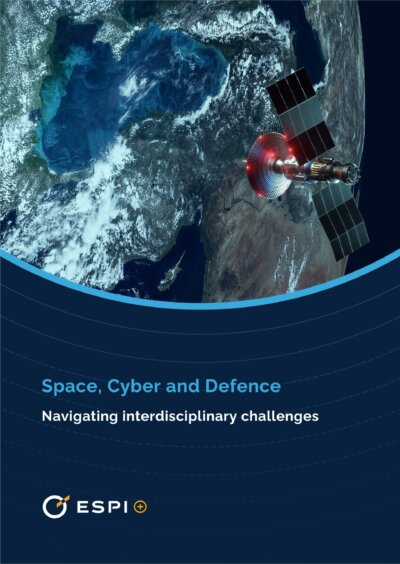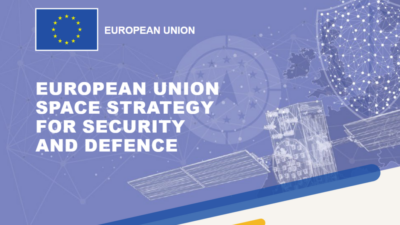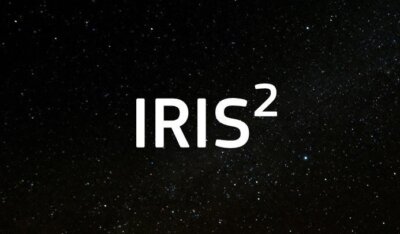Executive Brief No. 45
1. Can blockchain play a role in space systems security?
The previous ESPI Brief on U.S. cybersecurity policy for space (SPD-5) concluded that Europe should develop a determined and coordinated approach in this domain based, inter alia, on advanced capabilities to deal with the growing risks posed by cyber-attacks. In the process of a digital transformation of space systems through AI, Big Data and other disruptive technologies, questions arise on the role that Blockchain could play to enhance the security of space systems. Blockchain may have the potential to address several key security and trust concerns in the space industry. The technology has been incrementally developed during the last decade, proving its success in the finance, manufacturing, logistics, communications and legal fields. Examples of applications include cryptocurrency, smart contracts, distributed cloud storage, digital identity, supply chain communication, and proof of provenance.
Blockchain, which relies on “append-only” decentralised databases, has built-in system properties which may be valuable for the space sector, including the potential to:
- secure and control communication and data transmission between different systems, preventing the success of cyber-attacks against space assets;
- improve data transparency, accuracy and reliability along complex chains such as in the satellite supply-chain tracking process for example;
- offer solutions for data sharing that ensure data quality, integrity and confidentiality as it would be needed in domains such as SSA and STM;
- simplify patterns of the transaction through smart contracts and create a record of initial ownership for Intellectual Property Rights purposes.
2. Multiple projects initiated to investigate blockchain applications in the space domain
Cybersecurity encompasses several layers and, among those, the use of blockchain may prove interesting for ground station-satellite communication (both uplink and downlink). Firstly, blockchain may solve problems in securing satellite communication channels and prevent the success of some type of cyber-attacks against space assets. In Telemetry, Tracking, and Command (TT&C) systems, blockchain can optimize the management of the transaction between satellites and ground stations. Meanwhile, the integration of blockchain technology in the data transmission from the satellite to the ground station enables the control of the entire supply-chain. Data can be stored and recorded through blockchain, leading to a higher level of integrity, traceability, confidentiality and audit certification in the process. In the SSA and STM domain, blockchain may offer interesting solutions to address data sharing and fusion challenges. Blockchain-based systems may also ensure validation of identity and transaction authentication, enhance trust among the actors, and, as a result, incentivise transparency, confidence and cooperation.
In line with the emphasis of space agencies on space software development to make space operations more secure and efficient, different space actors have already started investigating how the space sector may gain advantages from blockchain. In 2017, NASA granted $330,000 to the Resilient Networking and Computing Paradigm (RNCP) project to explore the benefits of converting space assets into digital tokens to enhance the efficiency of communication systems. In 2019, in the framework of the Blockchain for Space Activities (BC4SA) project, ESA selected Guardtime to demonstrate how the Estoniandesigned Keyless Signature Infrastructure (KSI) Blockchain technology can be utilized to enhance data integrity and allow source verification of ESA EO data sets. In 2020, SpaceChain, supported by ESA Space Solutions as a Kick-start Activity, executed its first multisignature transaction through the blockchain hardware installed on the ISS. In the same year and with the objective to enhance security in global communications and space data transaction, the U.S. Space Force signed a contract with Xage Security to develop a prototype, which embeds blockchain technology. Within the CTEO – CryptoTradeable EO project, ESA signed a contract with PLANETEK ITALIA to test the blockchain technology in support of the EO integrity verification.
3. Limitations, consequences and necessity of standardisation
With multiple applications highly relevant for a number of modern challenges, blockchain seems to be a promising technology for the space sector. Nevertheless, this technology is still at an early stage of development for space applications and its relevance still has to be validated. Actually, some potential limitations and reservations have been already outlined:
- Decentralisation: difficulty to replace entrenched and institutional centralised actors with decentralised operating system.
- Vulnerability: blockchain technology can be vulnerable to large-scale cybersecurity attacks. • Complexity: the struggle for policymakers to fully understand its technicality can lead to regulatory challenges.
- Bandwidth and energy consumption: blockchain may use higher-bandwidth communication channels, creating challenges in regard to consumption of limited bandwidth. Also, it requires vast amounts of electrical energy, leading to concerns on its sustainability and scalability.
- Technical limits: blockchain-based systems are relatively slower and less powerful than terrestrial networks, rising doubts for high-performance processing system applications.
Even taking into account those potential limitations, the level of reliability and reliance provided by the features of immutability, decentralisation and transparency must not be underestimated. The ongoing assessment of blockchain technology for the space sector has already given way to a few regulatory enquiries. Surely, before getting to an operational phase, blockchain has to fully demonstrate its capabilities and practicability. If, and once, the technology is mature, qualified and understood, and the validity, usability is proven, a process for legal certification should be initiated. A certification of the reliability of satellite data processing, especially as opposed to the traditional data collection process, could consolidate the issue of the admissibility of satellite data before courts. Indeed, the proven veracity of blockchain-based operations could lead to the settlement of satellite data as legal evidence, increasing the impact of remote sensing data before international and domestic courts. A standardisation process could also support the growth of blockchain, raising confidence in the usability of blockchain in the satellite industry. Several standardisation efforts are currently pursued by the International Organization for Standardization technical committee on Blockchain and electronic distributed ledger technologies (ISO/TC 307). While soft-law instrument dealing with blockchain are being or have already been developed, the full potential of this technology can only be expected with the implementation of mandatory instruments.
For blockchain technology to reach full operational maturity, a strategy setting the principles for its integration in the different space infrastructures shall be defined. Securing terrestrial and space-based assets is a challenge that blockchain could help taking up. Therefore, Europe should continue to investigate its benefits, and, consequently, potentially support a smoothed entryway of blockchain into the European space industries.




